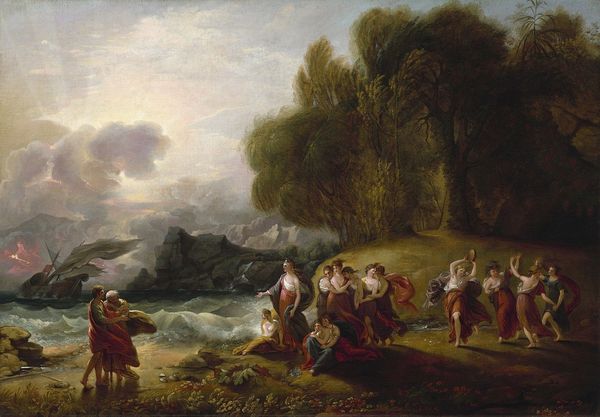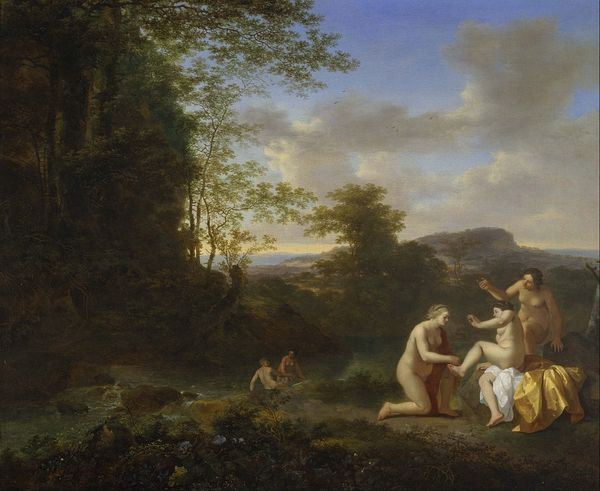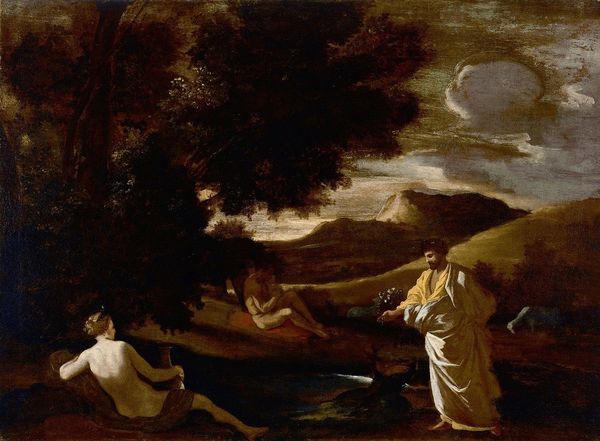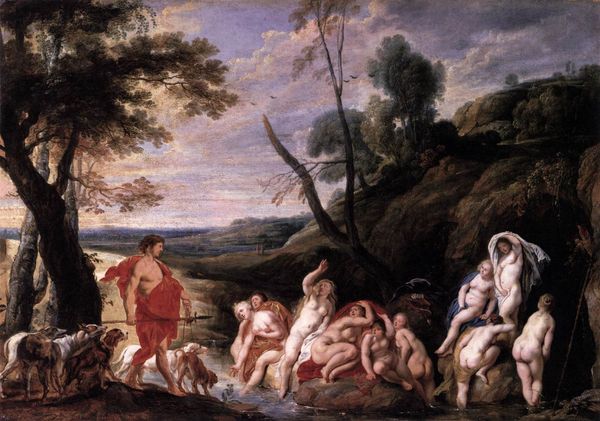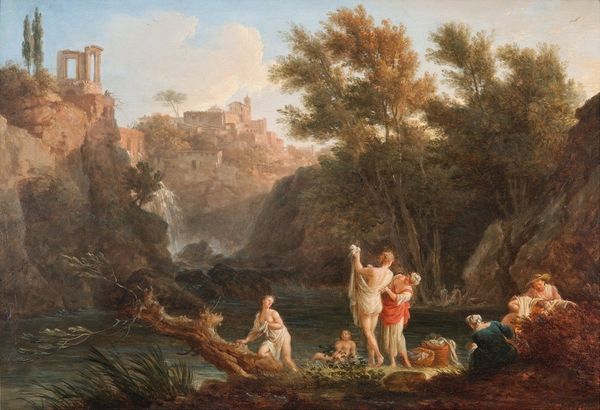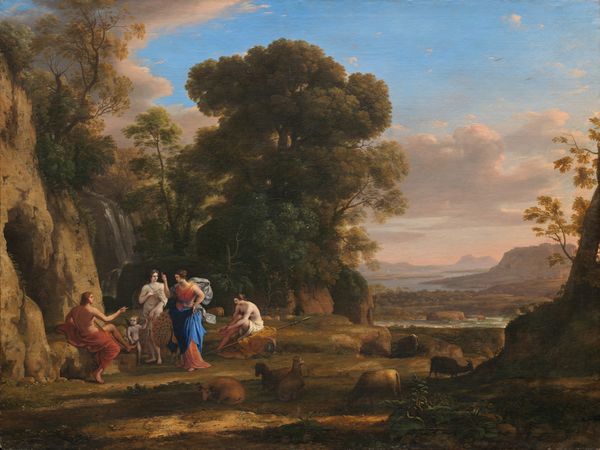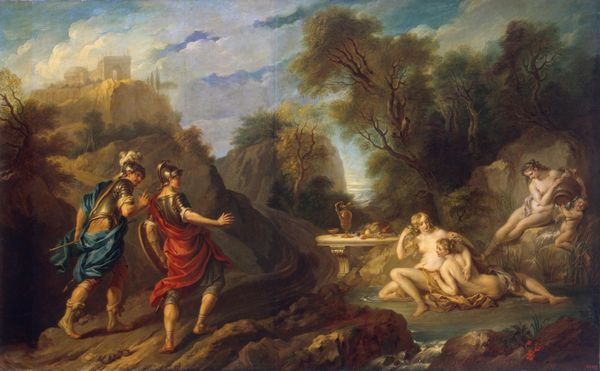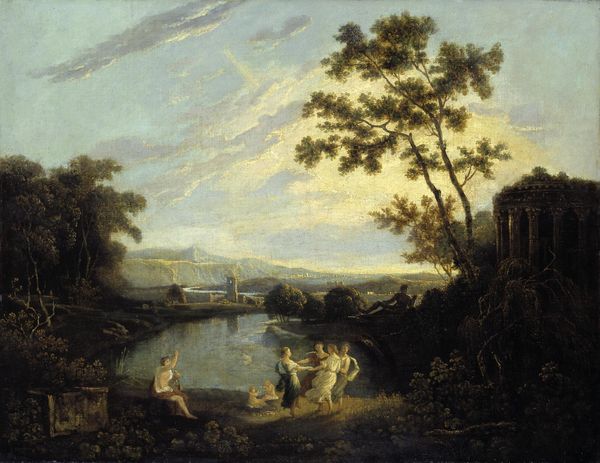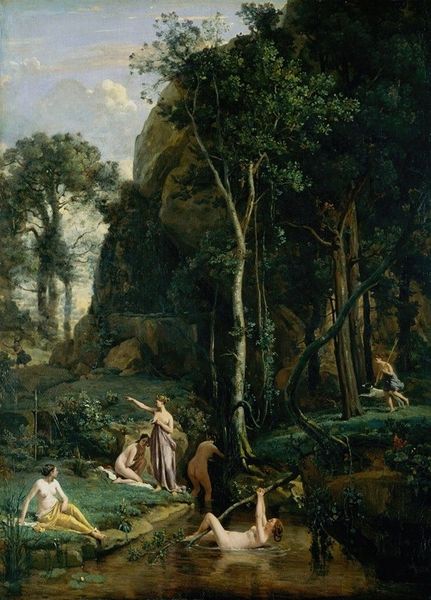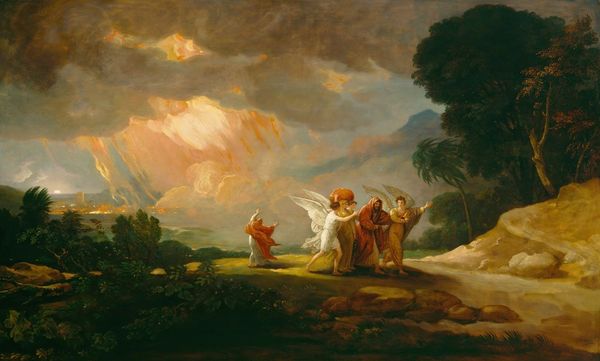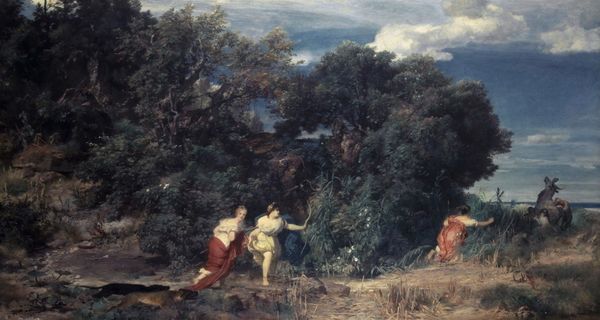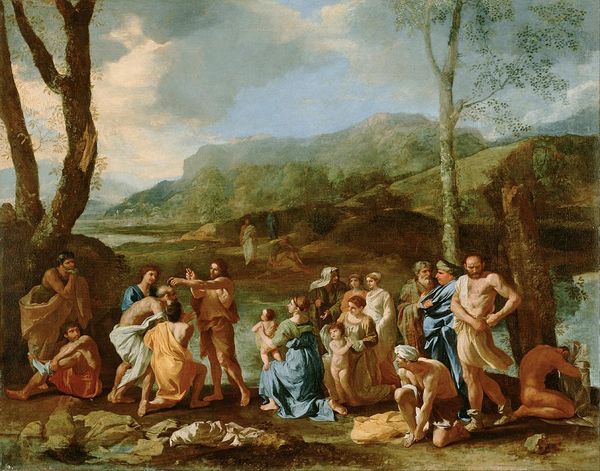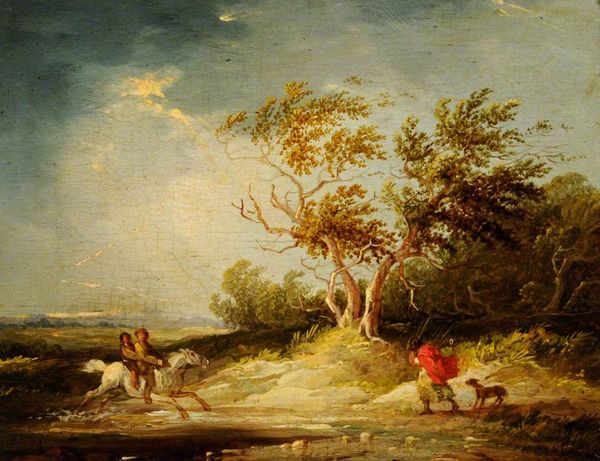
painting, oil-paint
#
painting
#
oil-paint
#
landscape
#
figuration
#
roman-mythology
#
romanticism
#
mythology
#
painting painterly
#
history-painting
#
academic-art
Dimensions: 101.6 x 142.88 cm
Copyright: Public domain
Editor: Here we have Benjamin West's "Calypso's Reception of Telemachus and Me," an oil painting from 1801. The scene has such a dramatic, almost theatrical quality to it. The figures are so expressive. How do you interpret this work? Curator: Well, consider the symbols. The shipwreck, a universal emblem of shattered hopes and forced new beginnings, is contrasted with Calypso's welcoming arms, embodying both danger and seductive solace. Note how West employs a darker palette on the left, where the wreckage occurs, and brighter, more golden tones to illustrate the idyllic existence Calypso offers, a visual representation of temptation and possible stagnation. Does the stormy, shipwrecked scene hold any other meaning for you? Editor: It feels like the chaos of life versus a false paradise. And the figures themselves - are they significant beyond the immediate story? Curator: Absolutely. Telemachus’ presence speaks to the unending search for father figures, leadership, and guidance through treacherous waters. Calypso becomes a cipher for powerful, yet ultimately isolating, feminine allure. Observe her placement, she mediates between land and water, human and divine – suggesting a liminal state, that powerful figures often occupy within our psyches and narratives. Editor: So the painting's power isn't just in the literal story, but also in the symbolic language it uses to explore universal themes? Curator: Precisely! West taps into the cultural memory surrounding these mythological characters, imbuing them with psychological depth. And the idyllic figures in the background serve as both backdrop and representation of temptation and surrender to eternal comfort, reflecting a timeless conflict between ambition and blissful oblivion. Editor: It is fascinating how the image seems to act as a repository of complex emotions, presented through classical allegory. Curator: Indeed. Art acts as a mirror reflecting our shared past and ongoing human experience. Understanding these symbols is like unlocking layers of meaning accumulated over centuries.
Comments
No comments
Be the first to comment and join the conversation on the ultimate creative platform.
